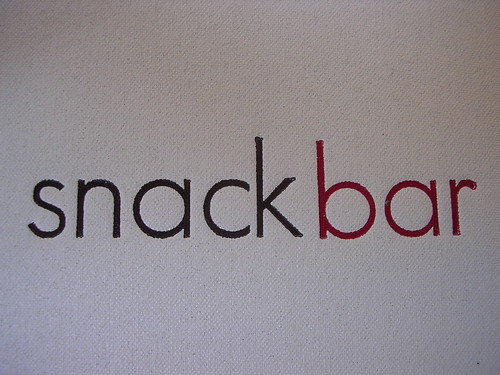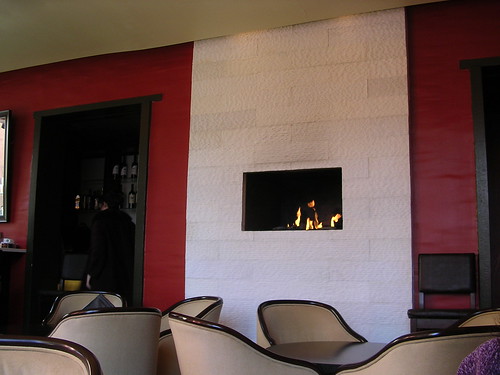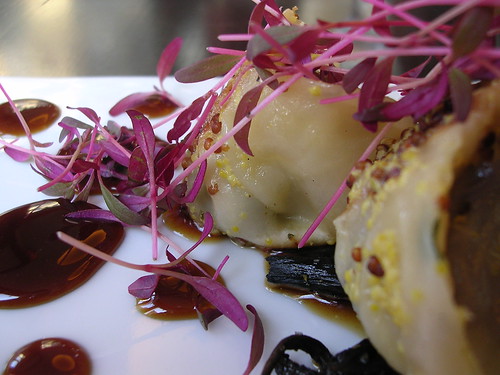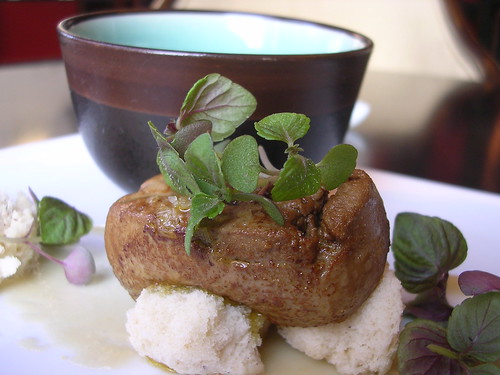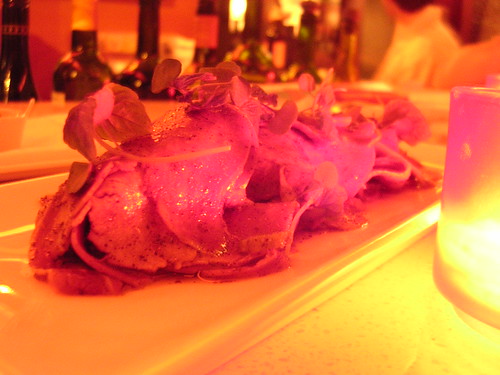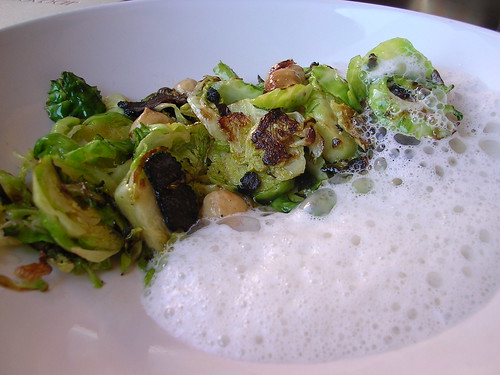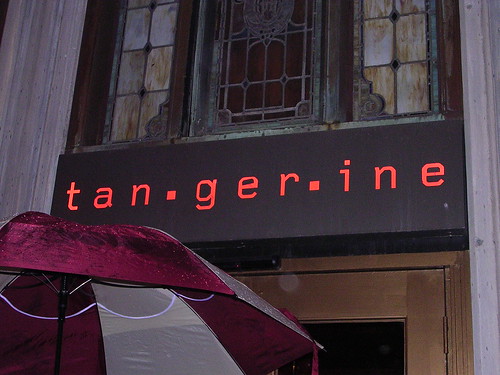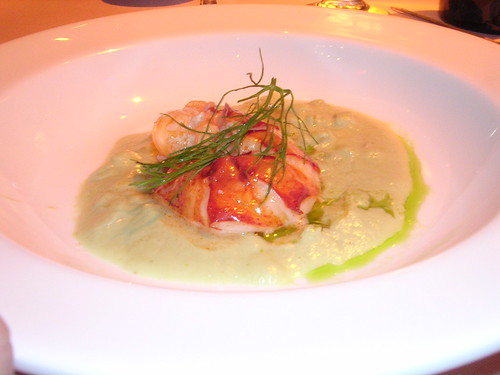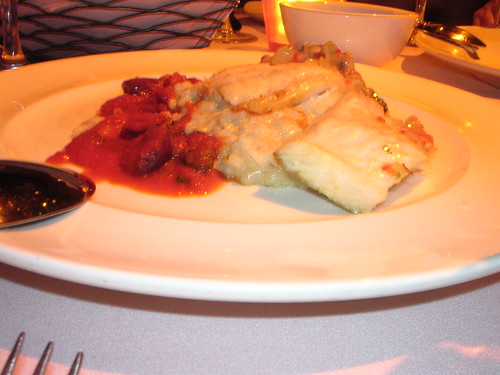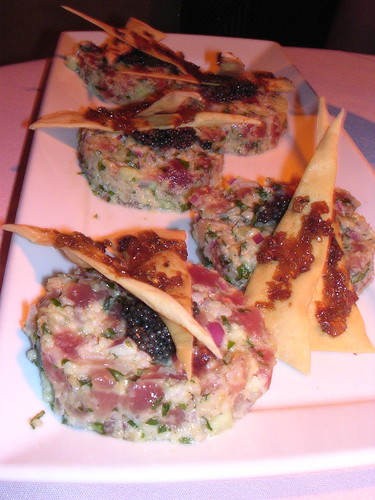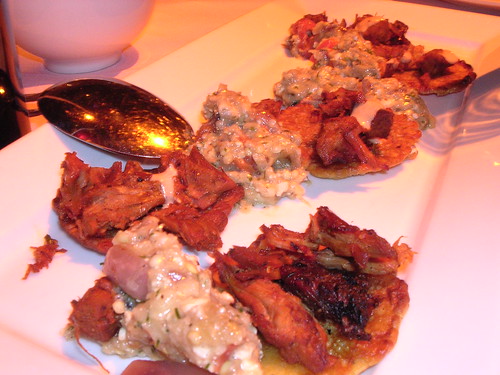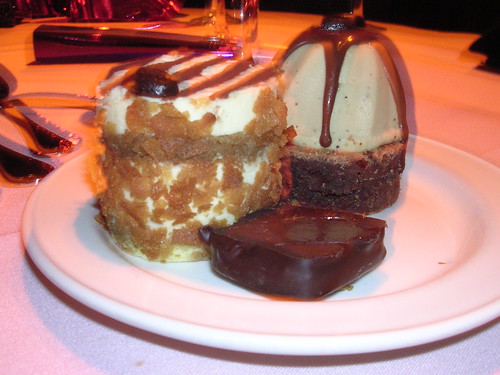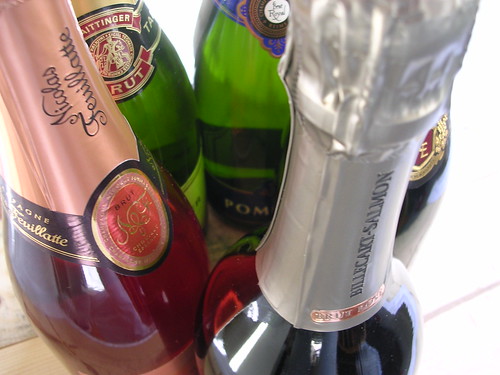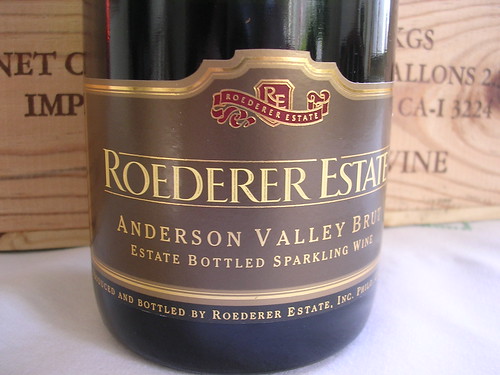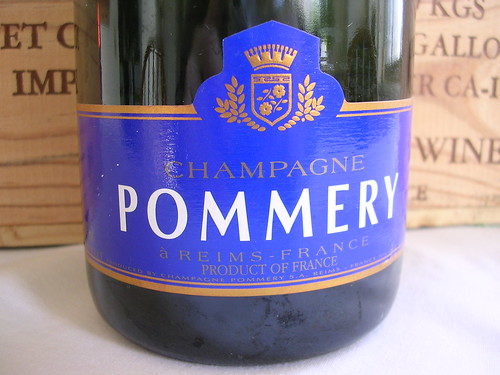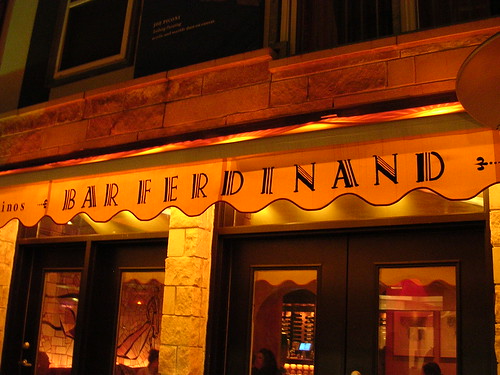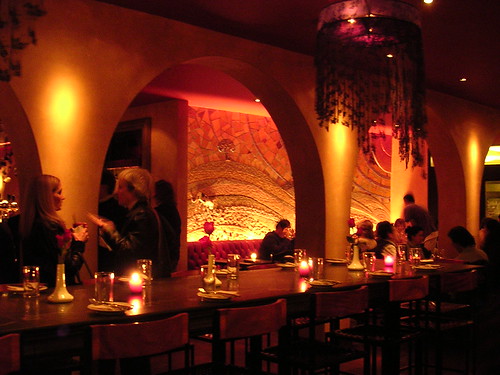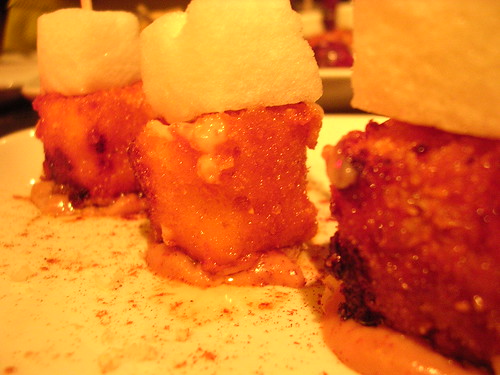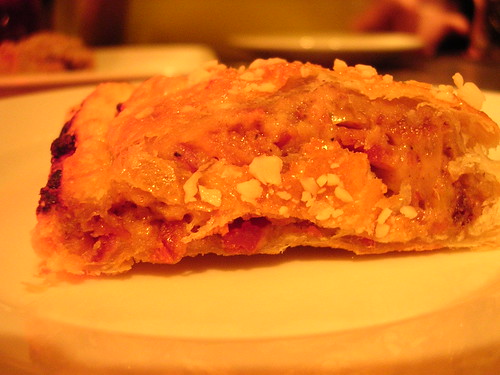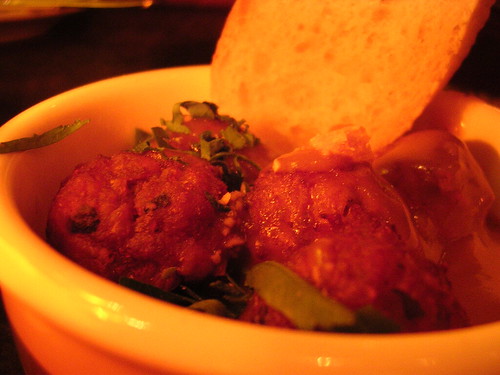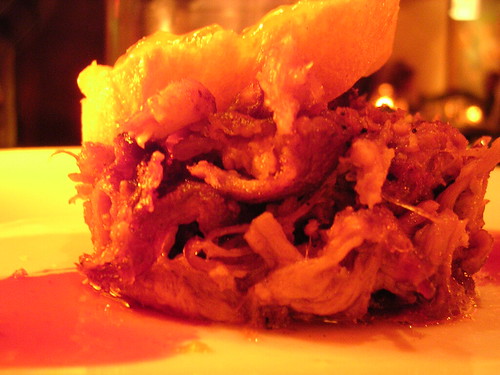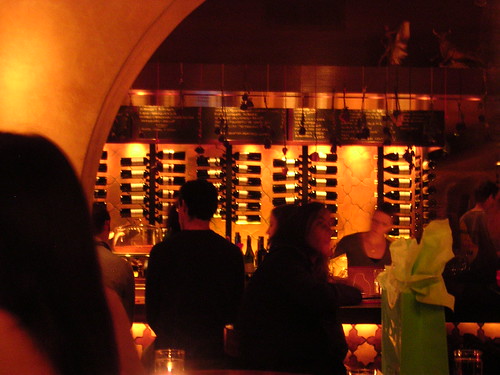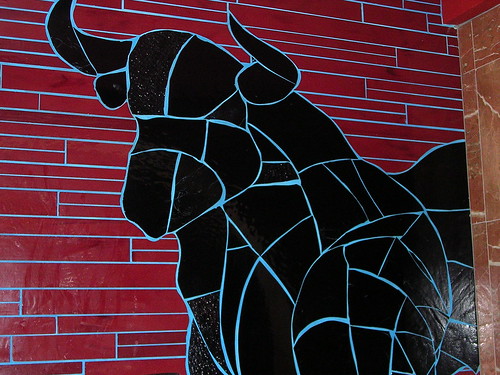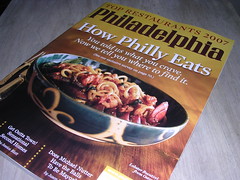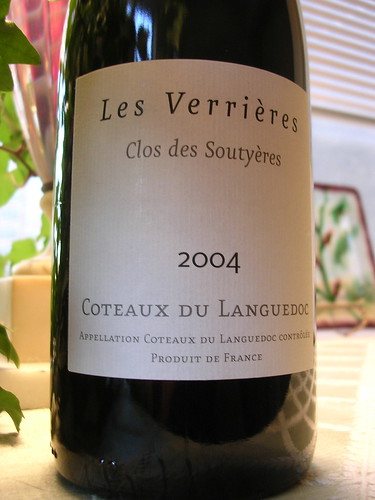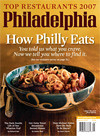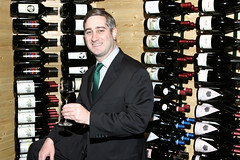 I scheduled this interview with Jonathan Newman, Chairman of the Pennsylvania Liquor Control Board (“PLCB”), weeks before the controversy erupted surrounding the rushed creation of the PLCB’s CEO position and former Senator Joe Conti’s appointment to that post. I had planned to fill our half hour discussion on December 20, 2006 almost entirely with the type of in-depth questions only a wine geek would ask, but the politics of the day could not be ignored and Chairman Newman graciously obliged.
I scheduled this interview with Jonathan Newman, Chairman of the Pennsylvania Liquor Control Board (“PLCB”), weeks before the controversy erupted surrounding the rushed creation of the PLCB’s CEO position and former Senator Joe Conti’s appointment to that post. I had planned to fill our half hour discussion on December 20, 2006 almost entirely with the type of in-depth questions only a wine geek would ask, but the politics of the day could not be ignored and Chairman Newman graciously obliged.
In his first-ever interview in the blogosphere, Chairman Newman talks candidly and passionately about his principled opposition to the CEO post, the shadow it casts over the continued viability of the initiatives he spearheaded, such as the Chairman’s Selection program, and whether he will remain with the PLCB in light of Conti’s appointment. Chairman Newman also shares his thoughts on the infamous Johnstown Flood Tax, whether it is still illegal to ship wine into Pennsylvania, and what the Pennsylvania legislature should do on the issue of direct shipment. And before the interview is over, he may even have a wine recommendation or two.
Chairman Newman, welcome to PhilaFoodie. Thank you for taking the time out of your busy schedule to talk with me.
It’s my pleasure.
I know that you conducted an online chat on the eGullet bulletin board back in the day, but have you ever been interviewed on any blogs?
I have a lot of respect for blogs. I think blogs have transformed the atmosphere of communications in Pennsylvania. This is actually the first such time I’ve participated in an interview in this format, so glad to do it with you for the first time.
I’m honored, Chairman. Thank you. Before we talk about wine, I’d like to talk a little about the PLCB’s newly created CEO post that made the news last week. The PLCB voted 2 to 1 to appoint former Republican State Senator Joe Conti as the CEO of the PLCB. You opposed the appointment and expressed some strong comments about it. Why?
It was a bad day for good government in Pennsylvania. I believe in public comment and a chance for media scrutiny. There was no transparency in state government. This was a decision that was a fait accompli by the time the information was given to me. I was given the name on Monday afternoon. I was given the job description and salary amount Tuesday afternoon at 3:00 o’clock and was supposed to rubber stamp it at 10:00 a.m. on a Wednesday board meeting. I felt that, given the dynamics of the Pennsylvania Liquor Control Board, if it was appropriate to search for a CEO, a COO, or a CFO, there should have been an RFP [request for proposal], we should have hired the best consultant to see if this was well-advised. And then if it did make sense, we should have truly done a national search and found the best individual. It was a bad day for state government, and at the end of the day integrity and character mean a lot to me and I felt very strongly that this was a bad move for the PLCB and a big negative for the commonwealth of Pennsylvania. And the reason I have been at the PLCB for 7½ years, and Chairman for 4½ years, is I believe in good government, I like my job, I work hard, I feel like I’m making a difference in people’s lives. The board powers that are mandated are statutory. Board members are meant to work full-time. I put in 60, 70 hour weeks and put my heart and soul into this job and feel like I’m making a difference for Pennsylvania consumers. And I object to the process and the way this was done.
Why do you think the Governor’s office rushed this appointment?
I don’t know. I can’t guess what the intent of others would be. I certainly have read op-eds throughout Pennsylvania. Every editorial board of every newspaper in the Commonwealth is outraged. It’s been covered extensively on radio, and I know that the public is outraged by what happened. And I’m obviously disappointed that this is what it came down to. But in order to understand the Governor’s intent and what his thinking would be, you’d probably have to ask him or his administration.
Certainly, the process was not done well. The PLCB has had record profits. Our numbers are extremely impressive, and I’m proud at the kind of returns we’ve delivered for the Commonwealth. In fact, on a press release approved by the Governor’s office, dated July 10, 2006, Pennsylvania Liquor Control Board announces record sales performance. Last year for our fiscal year that ended in June, for 05/06, we contributed $80 million in profits to the Commonwealth, $315 million in taxes, $18.5 million to the Pennsylvania State Police, for enforcement, $2 million to the Department of Health for drug and alcohol programs and $4.5 million in licensing fees, returning $420 million. Board member Tom Goldsmith is quoted as saying “the PLCB’s strong sales performance benefits all Pennsylvanians.” During the past fiscal year the PLCB will have contributed more than $420 million to the Commonwealth, bringing the total to more than $1.5 billion for the past four years. Expenses have been consistent. For the upcoming year, we’ve kept our expenses very consistent. The only expenses that have changed have been those negotiated by the Commonwealth, which include the licensing discount, which was legislative and signed by the Governor, and wage and other retirement benefits. So, we’ve watched our expenses very carefully. We’re opening big, beautiful Premium Collection Stores, our sales numbers have shown record growth, and I’m proud of our accomplishments. So, as far as intent, I’d be real curious as to what the answer is.
Does the PLCB really need a CEO?
Well, I wrote the Governor a memo in October of 2005 when I first heard the discussion of whether the PLCB needs a CEO, and it was right after the legislative pay raise fiasco. And I thought it would not be consistent with government to bring in a CEO at a big salary because, first of all, it’s statutorily mandated that such a position does not exist and has not existed since 1933 with the inception of the Board. And I have, for my $65,000 salary, put, as I said, my heart and soul into it. And I have been clear to the Governor and, David, I want to be clear to you. I have said to the Governor every step of the way, written it down, and said it to his administration: I do not want a dime more, I am doing the job that I love, the salary is not an issue to me, I absolutely don’t want anything more. That has been very well documented because I felt like I was doing some good and taking the PLCB to the next level, through all my marketing initiatives, because I care, because I was making a difference.
If the position was warranted, there should have been a national search firm brought in to have a competitive RFP to make sure we get the best consultant to see (a) if it’s warranted; (b) if it’s warranted, then you do a national search and you find out the best candidate who’s out there. That’s transparency in government. Not being given the name on Monday, an amount of money and a job description on Tuesday and expected to rubber-stamp it on Wednesday. So, I don’t know that it was necessarily needed, but if a professional was brought in and they made recommendations, certainly the Board should have been consulted during the course of such a process. Such a process did not occur.
The Philadelphia Inquirer reported that Governor Rendell was surprised and saddened by your opposition, and the paper also speculated that Rendell might strip you of your chairmanship of the three-member board. Do you think that’s true and have you spoken to Rendell since then?
I have not spoken to Governor Rendell since then. When we had our conversation on Monday, I said: Governor, I have some concerns, we need to sit down and talk about this. I would become a paper tiger and not be able to get the accomplishments that I’ve done going forward. And he said: no problem, he would put it together. I had a 3 o’clock meeting with Joe Conti, and Secretary [Joseph] Martz from OA [Pennsylvania’s Office of Administration]. I expressed to them in no uncertain terms why I would oppose this and I felt uncomfortable about it. And they knew based on that meeting that I did not have a comfort level in the process that was happening.
The two ways this is being spun is that there are declining profits, and that is far from the case. I can certainly forward to you our balance sheet. We have been a cash cow for the Commonwealth. And the other [way it is being spun is] to say that I wanted this position. I was doing the job required of this and never wanted a dime more from this. It was my love of making Pennsylvania a better wine culture, of delivering value for wine customers, of making sure I looked out for the consumer in advocating direct shipping, Sunday sales, opening our stores on holidays, tastings at stores, being able to sell accessories. So, I am saddened to see the weak response due to my indignation of the process and the way this was approached. I am hoping that the process will be reversed and they will come to their senses and realize this is a bad idea.
Senator John Rafferty, Chairman of the Law and Justice Committee, is planning, so far, on conducting hearings at the end of January. Both he, Representative [Ron] Raymond and Representative [Robert] Donatucci, the Republican and Democratic Chairs of the House Liquor Control Committee, are concerned about the process. The questions are: Is it appropriate to take a Board that has statutorily-mandated responsibilities and to have the Board abrogate those responsibilities to a person, giving them day-to-day control over all the responsibilities? Is it remedied by simply saying that that person reports to the Board? If you do something like this to the Liquor Control Board, could you do it to the PUC, to the Turnpike Commission? Could you bring in people at these very high salaries, who have not been confirmed by the Senate, and give them many of these mandated responsibilities? And that’s why I’ve received so many phone calls and support from many legislators who are outraged in the process.
You mentioned a lot of the improvements you’ve made at the PLCB. Does the creation of this new CEO position or Conti’s appointment threaten to change any of that at all?
Well, I think everything is to be determined. The day-to-day responsibilities have been taken away from the Board and been given to the CEO position. So, therefore, much of my vision, like the Chairman’s Selection wine program, using Pennsylvania’s purchasing power to get great deals for our consumers, and my visions going forward, for example, I had a concept of a virtual store. A virtual store is you could go to the Internet and have access to all the products the PLCB could obtain, items typically that only restaurants could obtain, other items that we have access to. So, if you live in a neighborhood that has a small store, you would suddenly have a huge selection of products available. You could find out about varietals, ratings, wineries, regions, you could keep a library of wines you ordered, you could order those products and they would be available in your store of choice in a very short time period. I think that was something that was due and was a concept that I was working on. But given the way the Board structure sits now, I don’t know that I will have my imprimatur on the future direction. It [the CEO job description] simply says the Board will be consulted on policy and regulatory issues and that this individual would report to the Board. But there’s a five-page description of how he’s taking over all these Board responsibilities. So, I believe firmly in the things that I was doing, making Pennsylvania a more consumer-friendly state, and initiated about 20 different marketing initiatives. As it stands now, given the present structure, I think there’s a real question mark as to what the future vision of the PLCB will be. And, quite frankly, if this decision is not reversed, I will have to seriously think about what my future is going to be because I am very uncomfortable the way things were done, and if the process is not reversed, I have serious reservations going forward.
You mentioned that Senator Rafferty plans to conduct hearings at the end of January. Do you think it’s possible that a lawsuit would be filed?
I don’t know who would file that lawsuit. I haven’t seen that yet, but I know that Senator John Rafferty is somebody who stands for good government. And he wrote me a letter that he sent to the other board members, also signed by a Republican and Democratic state representative, saying: listen, there’s been no chance for dialogue; we’ve had a good relationship between the PLCB, the Administration and the legislature; consult us; let’s do this in an open process with transparency in government; we’re very uncomfortable about the process. I’ve heard from Republican and Democratic legislators equally expressing outrage. I hope the legislature follows through on this and makes good on the situation, and I certainly would encourage the media and citizens to look into this process and see if this is what they believe state government is about.
I’d like to switch gears now to talk about your recent holiday purchasing trip to California. I understand that you are calling this the most successful visit ever to California. Why?
I am really proud of the Chairman’s Selection wine program. It’s something that has dramatically changed the way Pennsylvanians purchase wine. The Chairman’s Selection program has now exceeded $70 million in sales. And, essentially, the way the Chairman’s Selection program works is wineries never want to discount their product, but sometimes, for whatever reason, market forces, there’s a ton of product in Australia right now, and when wineries have to discount their products, what they typically do is sell it to restaurants or on cruise ships where there isn’t a perception that they are discounting their product. So, if a winery wanted to selectively discount their product in a market like New York and discount it to Sherry-Lehmann, if Zachys and Morrell are already paying full freight and they see that a winery is discounting to Sherry-Lehmann, that winery has alienated themselves forever with other retailers. But since Pennsylvania is a monopoly, I found a way of using Pennsylvania’s purchasing power to deliver great deals for consumers. This has been written up nationally in publications like the San Francisco Chronicle, which said Pennsylvania’s arguably the best place in America to buy fine wine. When I went out to California, the buzz is out there right now of what the Chairman’s Selection program is doing to create excitement among consumers, so wineries see it as a marketing investment in the Pennsylvania market to get their brands well-known. They don’t feel that they are hurting their products because I am including them in a program where we prioritize those brands in the stores, our employees have tasted those products, we’re creating excitement for their brand names, and since we’re a monopoly, we are in no way harming the marketplace nationally. And now, when they have really good products, they will call me and certainly when I go out and visit, that’s the opportunity, face-to-face, to get the job done.
And the recent trip to California is really amazing. The products have all been depleted and the way Chairman’s Selection products move is it creates a treasure hunt atmosphere. And with the inventory that was purchased, between the taxes and everything the Commonwealth will collect on this, we will have made $2.5 million based on these purchases. The wine lovers respond with their pocketbooks and the Chairman’s Selection codes quickly move, so people realize that there is a lot of excitement. That’s what every retailer wants to do—is to have great products in their stores, to drive products in their stores, to move through their inventory quickly. We do not take a larger mark-up on the Chairman’s Selection products than we do on any other product, so we don’t necessarily have an incentive to just sell Chairman’s Selections as opposed to other items.
The reason I do it is I feel like I’m making a difference with people. When people sit down at the dinner table, they have a great bottle of wine. I reject over 70% of the wines that are presented to me, and the only wines that are presented to me are wines that show cost-savings, don’t have bad press, and wines that have a good taste profile. So I want to keep the integrity of the program, to work hard to deliver profits to the Commonwealth.
And, at the same time, in South Eastern Pennsylvania, we would bleed a lot of business to Delaware and New Jersey, a lot of people would go out of state to purchase product. We are winning the battle of boarder bleed. We have had, three years in a row, over 7% growth. We are on track this year for a fourth record year where we have not seen this kind of sales growth since World War II and the reason is because of the Chairman’s Selection program; because we’re reinvesting in our stores, creating big, beautiful Premium Collection Stores with a great shopping experience; having a wide selection of wine and spirits; training our wine personnel, trying to take them to the next level. A lot of excitement has been created. I’d like to keep this moving forward and that’s why the recent events concern me.
Are there any wines that stand out from the recent California trip?
Yeah, there are so many. The Freemark Abbey Sycamore, which is a wine that typically sells for $55. This is from the great 01 vintage, $19.99 [PLCB No. 011702]. The Freemark Abbey Bosche, a wine that sells for typically $65.00, $29.99 [PLCB No. 011701], and that has a 95 rating from a prominent publication. The Freemark Abbey Bosche, just a beautiful bottle of wine. When I was there, I met with the people who purchased Arrowood as well, and we have some great Arrowood Chardonnay coming in. Grand Archer Cabernet, the [01] vintage, at a crazy price point of $8.99 [PLCB No. 011551].
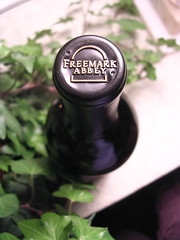
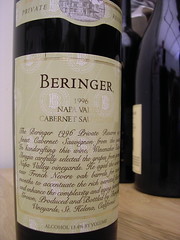
David, one of the things that I’m proud of is the high quality of these wines. Let me give you an example. One of my purchases was the 1995 Beringer Private Reserve Cabernet, which typically sells for about $100 to $110 in the marketplace. I sold it for $59.99 through the Chairman’s Selection program. There was a recreation of the Judgment of Paris, a tasting that Steven Spurrier did in 1976. In this new tasting, there were great Bordeaux, First Growths, California cult wines, and the winner was a Chairman’s Selection—the 1995 Beringer Private Reserve. Now, while that’s sold out, I just brought in from the California trip the 1996 [PLCB No. 011302], 1997 [PLCB No. 011307], great vintage, 1999 [PLCB No. 011238] and the stellar 01 vintage [PLCB No. 011685], line priced at $59.99. What a great opportunity for Pennsylvania consumers to try four different vintages of this amazing bottle of wine at that kind of price. But you know what, I’m a value shopper, and I purchase products everywhere from $7.99 to hundred dollar bottles of wine. Just an amazing selection. So, in the past, if you went to our stores, you might see ten Chairman’s Selections at one time. Now, you’re going to see 40, 50 different Chairman’s Selections during the last two weeks of December. Just an exciting time to be a wine shopper in Pennsylvania.
How did the PLCB snare 403 cases of the 2004 Clos des Soutyères from Les Verrières? Only 1,000 cases of that were made.
You know, that’s the difference in instilling in our wine buyers the fact that we’re a monopoly, that we’re the largest purchaser of wine and spirits in the United States, the largest purchaser of California and Italian wine in the world. And using our purchasing power to drive great deals with the wineries. Because, you know what, David, it used to be business as usual. A supplier would come in and you would simply list their wine and those were the wines available at the store. I try to bring in a good team of wine buyers to get great deals on products, to have people really fighting as consumer advocates.
Listen, we still have a long way to go. The taxes are too high. The Johnstown Flood Tax is something that should be visited by the politicians to find a way to make Pennsylvania prices more competitive. I’ve looked at concepts like flexible pricing because certainly our competition in Delaware and New Jersey uses loss leaders to lure in customers and then have high mark-ups on many products. We need to be more entrepreneurial. We need to hunt down these values. That’s where you make a difference in life. Fighting for the consumer, wanting to make a difference in peoples’ lives and being fiscally responsible at the same time. And I really think that we struck that balance during my 4½ year tenure as Chairman.
I’d like to talk a little about direct shipment. Pennsylvania’s statutory and regulatory scheme used to prohibit out-of-state wineries from selling and shipping directly to consumers, hotels and restaurants, while allowing in-state wineries to do so. The Cutner v. Newman decision out of the Eastern District of PA declared Pennsylvania’s statutory and regulatory scheme unconstitutional on Equal Protection grounds. However, the decision appears to enjoin the PLCB from enforcing those laws only to the extent that they are applied differently with respect to in-state and out-of-state wineries; it does not appear to enjoin the PLCB from enforcing them altogether. So, what is the state of the law right now on direct shipment? Are all wineries prohibited from selling and shipping directly to consumers, or is it the other way around—are all wineries permitted to sell and ship directly to consumers?
David, that’s a great question. I’m going to give you a detailed answer to it. Of course, I put aside a half hour and this will be the last question, but I want to give you my very candid thoughts on the topic of direct shipping.
Let me tell you first why I support direct shipping. I think we owe it to the Pennsylvania consumer to give them as many choices as possible. And as much as we are stocking the Wine and Spirit stores, especially the Premium Collection stores, with an amazing selection, there is no retailer in the country that can stock the tens of thousands of wines that are available all over the country. And consumers, especially wine drinkers, want a wide range of products. So, if somebody wants to pay the taxes and have wine shipped to their home, I don’t have any objection to it. And let me tell you the reason. I have four children. I have an 18 year old. I am nervous about everything he does and of every vice that’s out there right now. The one concern I don’t have is that he’s going to be purchasing fine wine on the Internet. So for people to think that this is about wine getting into the hands of minors, it’s a misnomer. The concept is there truly has to be an adult signature required. If not, the shippers and the people who are sending it would suffer very strong penalties, a loss of their reputation, serious fines. And what’s happening right now? People are shipping via brown boxes and it’s being left for minors. So, since there isn’t a vehicle for tax collection, and an outlet for doing this legally, people are bootlegging it, they’re are shipping it in brown boxes and it is getting into the hands of minors, and that is the wrong thing. We work too hard at the PLCB in documenting at the stores, making sure it’s not getting into the hands of minors. And you could set up a system where you are checking to make sure that an adult signed for it and it’s not just being left on the doorstep for kids.
Second is the question of tax revenue. Since people are shipping it in brown boxes, there is zero tax collection. So, in fact, I believe this could be incremental revenue to the Commonwealth of Pennsylvania. If people are willing to pay the taxes, want to have it picked up at their home, God bless them. Let them pay their taxes, have the product shipped to their home.
As far as what the state of law [is] in Pennsylvania right now: there is no law on the books. And the law has been found unconstitutional. So, shortly the legislature is going to have to take up this issue and deal with it head-on because the law has been found unconstitutional. I know that wineries are very nervous shipping into Pennsylvania right now; nobody knows what the state of the law is. But clearly there has to be legislative action shortly.
Where is Rendell’s proposal?
I don’t know. I haven’t seen anything on it recently.
Chairman, I really appreciate you taking the time out of your busy schedule to talk with me here today.
Thank you.
Read More....
